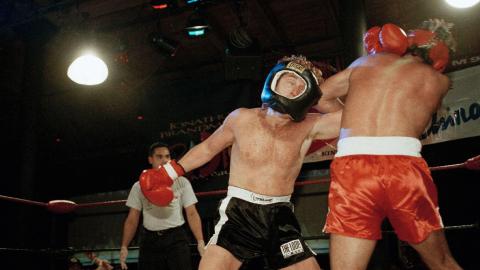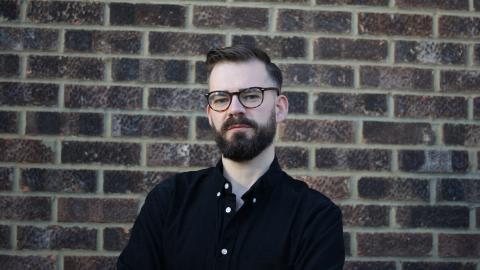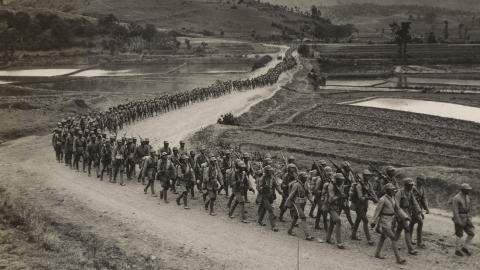The horrors of the Kraków-Płaszów concentration camp
'When you saw Göth, you saw death.' Those were the chilling words of Kraków-Płaszów concentration camp survivor Poldek Pfefferberg when he was asked to share his memories of the camp’s psychotic commandant. It was an all-too-fitting description.
Constructed in 1943 on the site of two Jewish cemeteries, Kraków-Płaszów was a dreadful place, even by Nazi concentration camp standards. In charge of the camp was the terrifying, six-foot-four SS-Hauptsturmführer, Amon Göth. Originally from Austria, Göth had joined the SS in 1933. In the years before the war, he remained fiercely loyal to the Nazi cause, eventually fleeing to the Dachau SS training camp in Germany after the party was outlawed in his native Austria.
After the outbreak of the Second World War, Göth gained a reputation as a capable administrator, especially in the rounding up and relocation of Jews in Nazi-occupied territory. This led to him being transferred to the Polish city of Lublin in 1942. There, he helped establish the German extermination camps Treblinka, Sobibór and Bełżec.
Following the construction of these three death camps, it was decided that a new labour camp was needed close to the centre of the city of Kraków, and Göth was chosen as the man to not only oversee its construction, but also to run it. Work began on the camp in the Kraków suburb of Płaszów on the 11th of February 1943 and was completed just one month later.
The camp was to be populated with the Jews of the Kraków ghetto. Established in the Podgórze district of the city in 1941, the ghetto was home to 15,000 Jews at its height, though by the time Göth and his troops arrived to liquidate the ghetto for good on the morning of the 13th of March 1943, these numbers had dropped considerably due to previous ghetto clearances.
The liquidation of the Kraków ghetto was a brutal, inhuman affair. Eight thousand Jews were rounded up and deemed fit to be transferred to use as forced labour at the newly-established Płaszów camp. The rest of the ghetto’s residents – an estimated 2,000 people - who were judged unfit to work were rounded up and murdered in the streets. Any stragglers found after these murders were sent to Auschwitz, where they either died on the journey or were immediately gassed upon arrival.
Göth enjoyed humiliating, torturing and murdering people, and the rules he established in his own little fiefdom were among some of the harshest ever imposed
Now populated with prisoners, Płaszów started out as a slave labour camp before eventually being upgraded to full concentration camp status as the camp grew in size. Daily life in the camp was even more horrendous than in the other camps the Nazis established in their conquered territories, due mainly to the activities of its commandant. Göth enjoyed humiliating, torturing and murdering people, and the rules he established in his own little fiefdom were among some of the harshest ever imposed within the Nazi concentration camp system.
Prisoners could be executed for a whole wealth of reasons, ranging from being found with extra food hidden in their clothes to being related to a prisoner who had attempted to escape. Göth believed in collective punishment and wouldn’t hesitate to execute or severely beat prisoners who hadn’t actually done anything wrong. Executions took place on an almost daily basis on a large hill close to the camp known as Hujowa Górka. Trenches were dug on the hillside and prisoners were forced to stand naked in lines in the trenches where they were shot one after the other in the back of the head. Göth ordered that all prisoners of the camp had to watch these mass executions, including the children who lived in the camp. These children were eventually rounded up and sent off to Auschwitz to be gassed when Göth needed to make some room for incoming prisoners.
It wasn’t just the strict rules Göth imposed on the camp that left prisoners living in a permanent state of fear, however. The commandant’s psychotic behaviour made life in Płaszów almost unbearable. Prisoners who survived the war describe a huge, foul-tempered and often drunken man who liked to shoot at least one person dead every day before he’d had his breakfast.
Seasoned prisoners who knew of the delight Göth took from killing people would scatter and hide when they knew he was near. Those who didn’t hide were always in grave danger of being shot dead on sight. Göth would kill people simply for looking him in the eye; he would kill people who he thought were walking around the camp too slowly, shooting them with a high-powered rifle from the window of his office; he would kill people for making simple mistakes, such as serving his soup too hot or not cleaning his boots properly. Nobody was safe in the hellish world the commandant created.
And then there were Göth’s dogs. Rolf and Ralf were a Great Dane and a German Shepherd that Göth had personally trained to attack prisoners on command, tearing them limb-from-limb as their screams rang out across the camp. Not even the men who looked after Rolf and Ralf were safe. When Göth began to suspect the dogs preferred one of their handlers over their master, he had the man brought before him and shot.
'As a survivor I can tell you that we are all traumatized people,' recalled Helen Jonas-Rosenzweig, a young woman forced to work as Göth’s maid who witnessed firsthand his appalling sadism. 'Never would I, never, believe that any human being would be capable of such horror, of such atrocities.'
There was, however, a glimmer of hope for the prisoners who lived under Göth’s vile regime. That glimmer took the form of the German-Czech industrialist and Nazi Party member, Oskar Schindler. Schindler had come to Kraków to set up an enamel cookware factory in the Podgórze district of the city in 1939. Initially, he employed Jews at his factory because they were paid substantially less than Polish workers. As a businessman, it made sound financial sense to employ Jews over Poles. It also meant that Schindler was left with much more money to spend on himself and his many influential friends.
However, as the war years went on, Schindler began to realise that the Nazi Party he had once supported was an abomination, and his initial exploitation of a cheap workforce morphed into an overwhelming desire to protect his workers from monsters such as Amon Göth. The industrialist managed to ingratiate himself with Göth by showering him with flattery, gifts and bribes. So good was Schindler at laying on the charm that Göth would go on to believe they were the best of friends. In reality, Schindler despised the sadistic commandant.
Thanks to Schindler’s charm, ingenuity and willingness to hand over increasingly expensive bribes to officials such as Göth, he was able to successfully rescue his workers from being gassed in Auschwitz when the decision was taken to close down Płaszów in late 1944 as the Red Army drew ever closer. Schindler persuaded Göth to let him transfer his workers to a new, supposedly SS-run camp in Brünnlitz in his home state of Bohemia-Moravia. Unaware that Schindler was deceiving him and had no intention of running Brünnlitz as a typical concentration camp, Göth agreed, and Schindler was eventually able to save 1,200 Jews from almost certain death, though not without first having to lay out even more bribes to the commandant of Auschwitz when three hundred of his female workers were sent there instead of Brünnlitz by Göth’s successor.
Amon Göth’s reign of terror in Płaszów came to an end on the 13th of September 1944 when he was arrested and charged with the theft of state property, the mistreatment of prisoners (which was quite an achievement, all things considered) and allowing unauthorized access to camp records. By the time of his dismissal and arrest, thousands of men, women and children had died under his command in what was one of the most needlessly sadistic concentration camp regimes in the entire Nazi empire.
By the time the Red Army rolled into the suburb of Płaszów on the 20th of January, all that was left of this horrifying place of terror and death was a patch of scorched ground.
After Göth’s arrest, the camp passed into the hands of SS-Obersturmführer Arnold Büscher. Though no saint himself, Büscher immediately made life more bearable for the prisoners in his charge by upping their rations and stopping the random hangings and shootings that were a daily feature of camp life under Göth. Kraków-Płaszów was eventually closed in January 1945, with the remaining inmates marched off on foot to Auschwitz, where the majority of them died. The camp was completely dismantled, all bodies were exhumed and burned, and all records destroyed. By the time the Red Army rolled into the suburb of Płaszów on the 20th of January, all that was left of this horrifying place of terror and death was a patch of scorched ground.
And what of the camp’s sadistic commandant? After his arrest, Göth was found by a panel of doctors to be suffering from a mental illness and he was confined to a hospital in the town of Bad Tölz in Bavaria. He was arrested in the town in 1945 by US troops. At the time of his capture he was wearing a German Army uniform and was not immediately identified as an SS officer. However, survivors of Płaszów later identified him and he was tried and found guilty of imprisoning, torturing and killing thousands of people.
Amon Göth was sentenced to death for his crimes. He was hanged in the Montelupich Prison in Kraków on the 13th of September 1945, a short distance from the site of the notorious concentration camp where his sadism and utter lack of humanity had caused so much human suffering. In the annals of Nazi tyranny, Amon Göth was truly one of the regime’s greatest monsters.
















